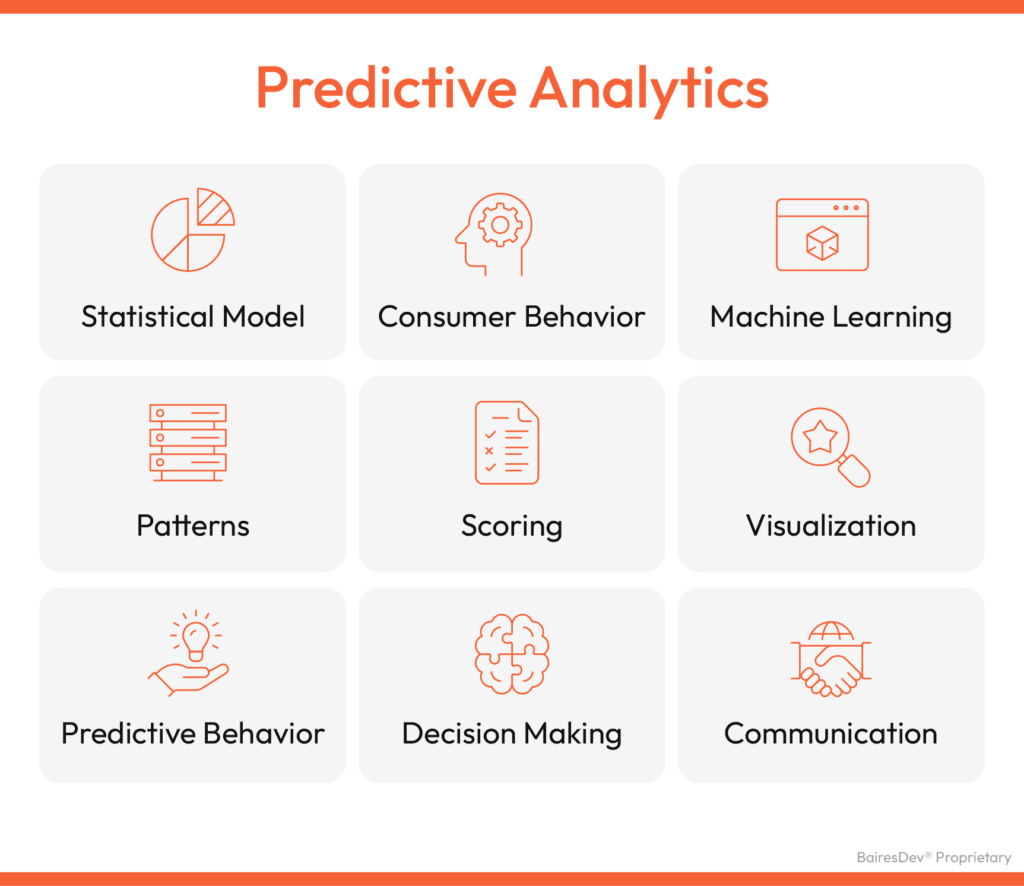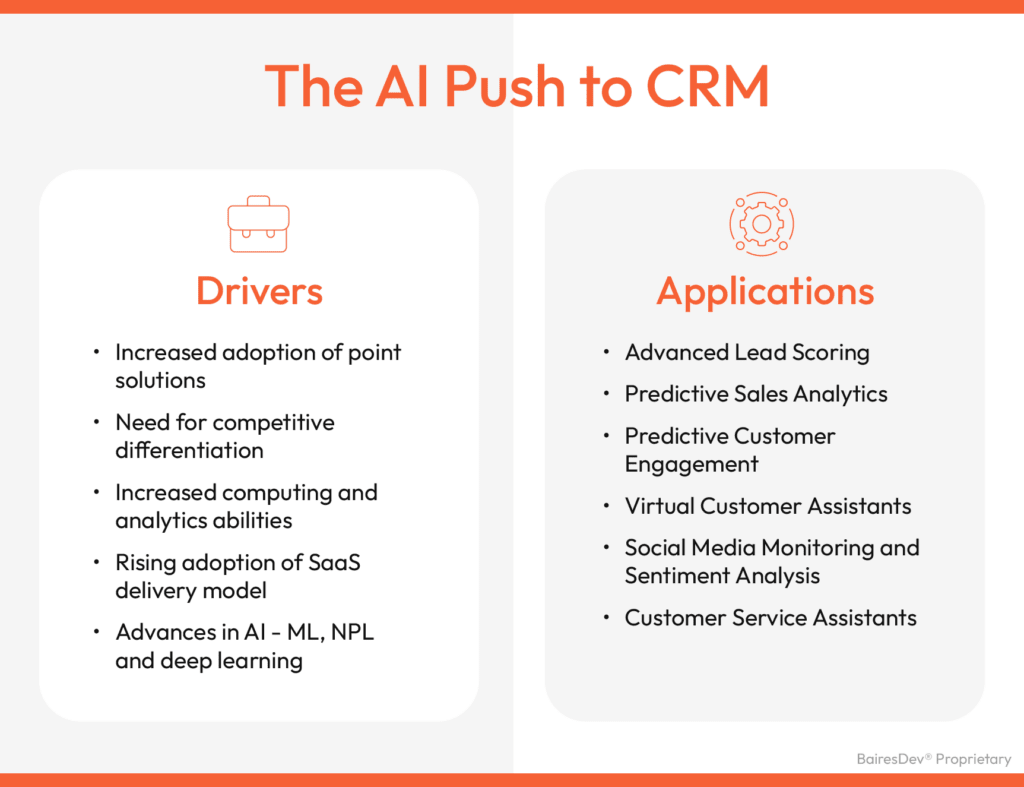The internet is filled with articles, videos, podcasts, and other resources about AI and its many uses. With all this information about the benefits of AI, business leaders may feel they aren’t doing enough with this transformational technology.
As a result, companies may be tempted to embrace AI tools because they are new, impressive to customers and other stakeholders, or because their competitors are using them. However, investing in AI for these reasons does not represent a path to success.
To grow, improve, lead, and innovate, companies should choose AI tools that align with their needs. Successful companies understand their core operations and use technology to support their goals. The following is an example of how businesses can connect their AI digital innovation with their key business drivers.
A global consulting firm partnered with us to create a secure, scalable, and versatile AI platform. This platform, accessible through APIs, enables facial and object image recognition, as well as emotion and language pattern analysis in text. It serves industries like telecommunications, education, and vehicle tracking, enhancing public safety.
Our team of 20 senior engineers on the Delivery Team achieved key tasks: designing a user-friendly AI algorithm repository interface, creating a secure admin interface, and setting up an API Gateway and API Services with detailed documentation for customer access.
Clearly Define Goals
A company’s goals should stem from its mission. Suppose it is to help busy women in corporate positions succeed by removing the burden of shopping from their task lists. In that case, one goal might be to provide highly efficient personalized shopping services.
It’s advisable that goals adhere to the SMART framework, meaning they should be Specific, Measurable, Achievable, Relevant, and Time-sensitive. If necessary, break down goals into smaller objectives to meet these criteria. For instance, expanding into new markets is crucial to align with the example company’s mission of helping busy women succeed. A SMART goal in this context could be to acquire 100,000 new customers in Colorado within a year.
With this clearly defined goal, a company can consider what AI developments and solutions might support it. Predictive analytics could analyze data related to women’s shopping habits with corporate jobs, along with where they spend time online. This information would help the company decide where to advertise its services.

Predictive Analytics Use Cases
Greater efficiency can be supported with chatbots. When women first access the service, a chatbot could walk them through the sign-up process, provide information about all the services available, and help them place their first order. Later, chatbots can help with simple customer service issues and find a human representative to address more complex concerns.
Providing suggestions on items to purchase can be supported with personalized recommendations. A good example of this type of service is Amazon’s “Inspired by Your Recent Purchases” and “Related to Items You’ve Viewed” sections. The example company could implement similar sections on its website so women can get helpful ideas based on their browsing and purchasing histories.
In these ways, digital innovation efforts can be mapped to company goals, ensuring that technological advancements contribute directly to achieving them. Such planning prevents companies from spending on solutions that won’t ultimately improve their bottom lines.
Consider Customers
Businesses using AI should also map their use to customer needs and preferences. Doing so requires robust methods for understanding those needs and preferences, including the following strategies:
Feedback opportunities: Businesses can ask customers’s feedback at many points throughout the customer journey. It could be about their website navigation, comments on the online buying experience, seeking ratings on items they purchase, or about the customer care process.
Customer behavior: Companies should analyze what customers communicate based on their behavior. Buyers who make repeat purchases are likely communicating they are happy with the company, its processes, and products. Customers who make one purchase, return the items, and don’t make additional purchases are likely communicating that they’re unhappy with one or more aspects of the company.
If you want to address your customer needs with AI development, learn more about our AI expertise and services.
Surveys: One of the best ways to find out what customers think of a business is to ask them directly. Surveys provide good information about how a company is doing within specific areas.
AI can compile information from all these sources to help companies determine where to add or remove other AI solutions to help customers get more of what they want and less of what they don’t want. This type of strategy can ultimately drive customer loyalty and revenue growth.
Engage Employees
Companies benefit from employee insights for customer-focused improvements and operational efficiency, which is crucial for customer satisfaction and ROI. Encouraging employee input on AI utilization is key.
Company leaders hearing this information can consider what AI solutions can address specific issues. For example, a transportation management system could better anticipate delivery issues and assign more realistic delivery dates. A company could use this process to improve customer satisfaction. But it could also take it further and make on-time gift delivery part of its marketing messaging.
Use Cross-Functional Collaboration
Communication issues between departments within companies are a long-standing problem in the corporate world. One solution could be an AI-driven customer relationship management (CRM) system within an organization. By collecting specific information about sales calls, this system could help the marketing department understand the pain points, and customize their messaging to address those points.
Analyze AI Trends
Organizations should regularly analyze market trends and emerging technologies to identify opportunities for digital innovation. The following sources of information can be helpful in learning about AI trends:
Competitor analysis: Studying how competitors are using AI technologies can help businesses identify potential gaps in their own AI development.
Networking and industry events: Attend industry conferences, webinars, and networking events related to AI. They provide opportunities to hear from AI experts, connect with peers who can offer advice, and gain valuable information about AI trends.
Internal data analysis: This is the prime source for leaders to gauge AI’s impact on operations and performance, uncovering project outcomes, costs, efficiency, and customer satisfaction. It offers insights into AI’s benefits and areas for potential investment.
Measure Success
Another way to ensure AI-based technology deployments are rooted in business drivers is to measure the success of those already in use. The following methods can be used:
- Key performance indicators: A useful KPI regarding an AI-powered CRM might be “30% increase in leads.” KPIs can be related to revenue growth, cost reduction, customer satisfaction, or operational efficiency.
- ROI: Companies can calculate the ROI of an AI deployment by comparing the costs of implementation and maintenance with the financial benefits achieved.
- Customer feedback: Customer reactions can be in the form of surveys, feedback forms, or user interviews. These sources offer insights into user satisfaction, usability issues, and potential areas for improvement.
- Time and resource savings: Companies can assess the time and resources saved through AI automation.
- Adoption and integration: Companies can gather this information from usage metrics, user surveys and feedback, user support requests, workflow efficiency, and comparison with industry benchmarks.
Information from all these sources can be used to understand which types of AI-based technologies are useful and to what degree. From those conclusions, business leaders have more information to make decisions on future AI investments.
An Inside-Out Approach
In today’s dynamic business environment, companies understand the importance of internal resilience. This involves flexible systems and processes that can withstand challenges, beginning with a clear mission and vision. The video highlights resilience and how digital solutions, including AI, drive business success.
In conclusion, aligning business and technology choices with mission statements fosters long-term flexibility and goal congruence. This strategic alignment helps businesses avoid costly detours and aids in achieving key objectives such as improving customer experiences, operational efficiency, and profitability. Successful companies prioritize an inside-out approach to digital innovation, enabling them to confidently navigate uncertainties and pave the way for enduring success.








